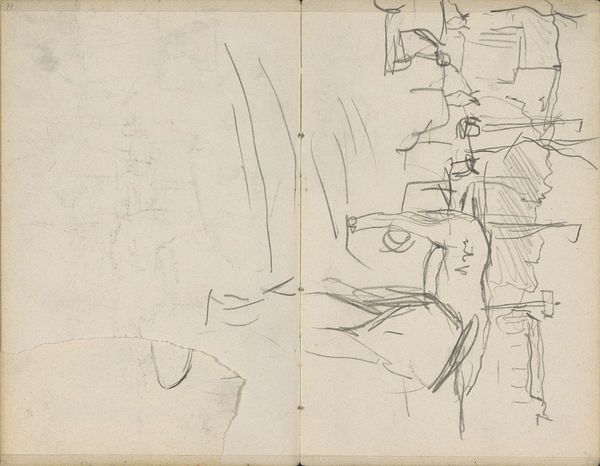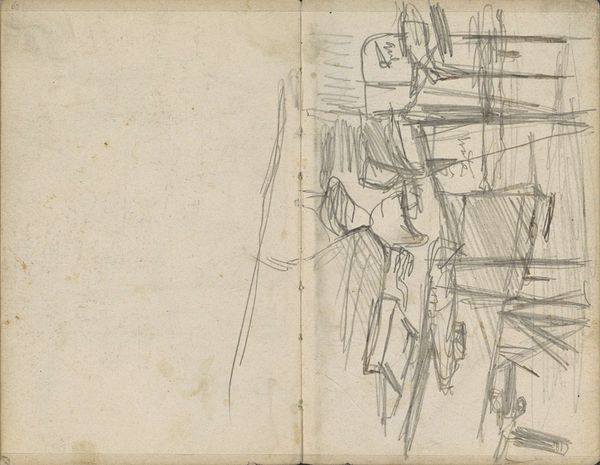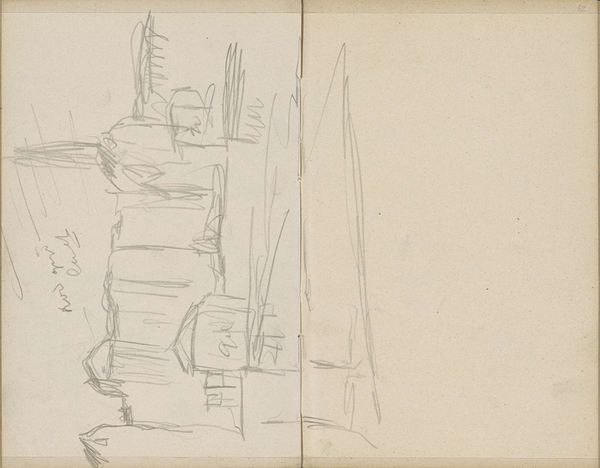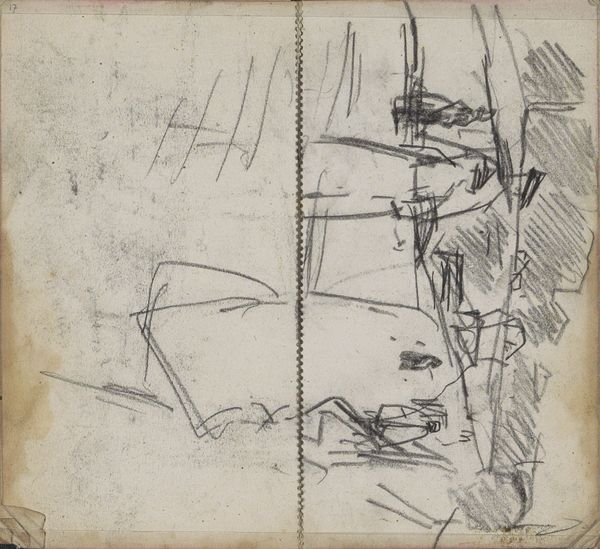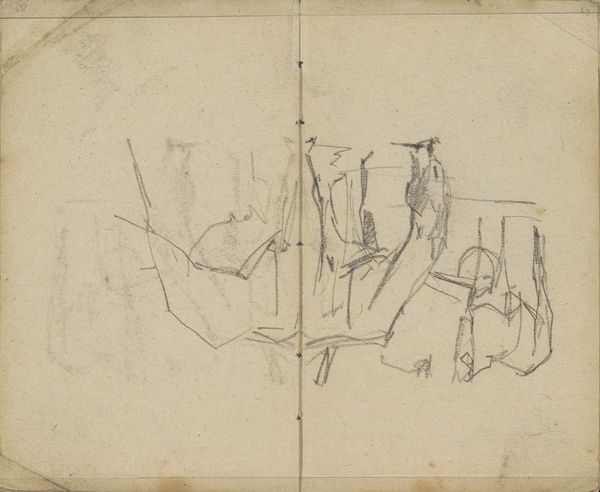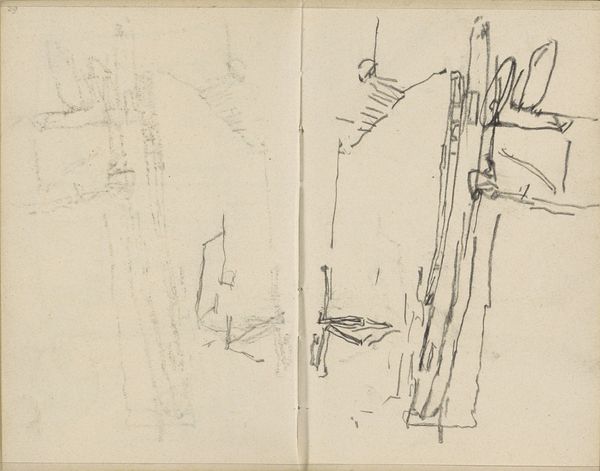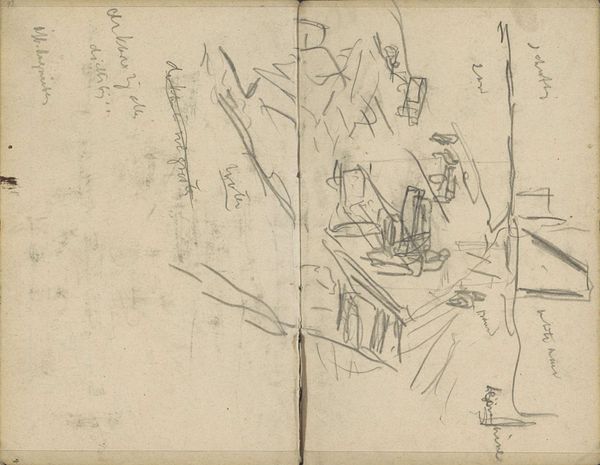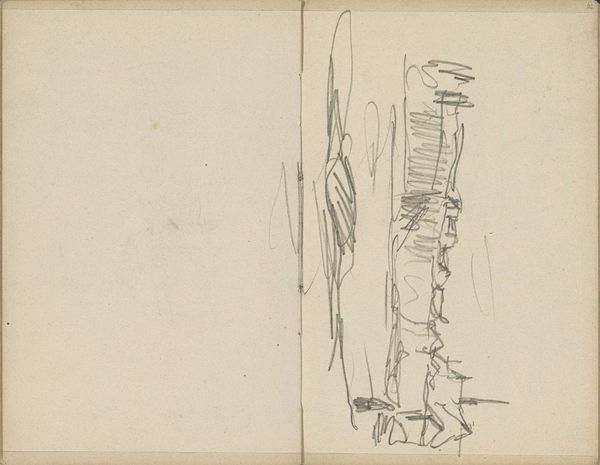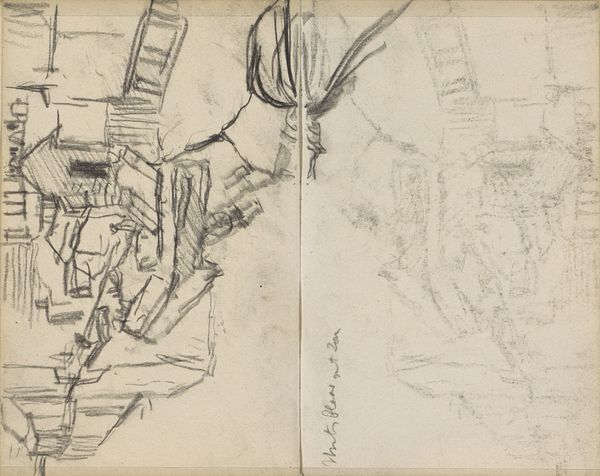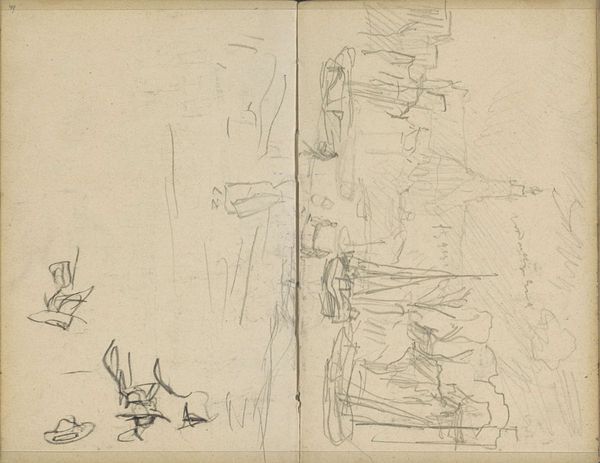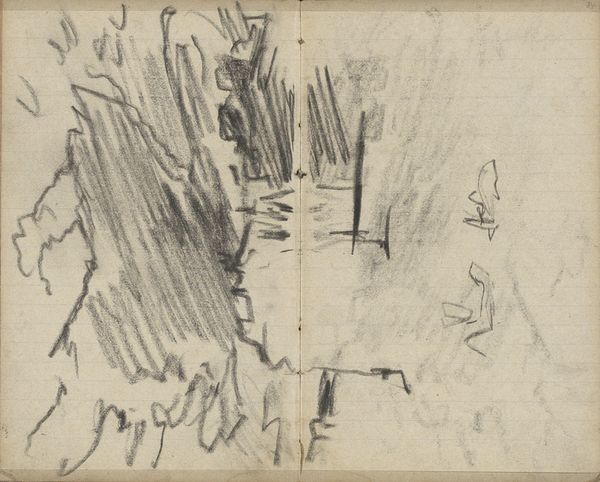
Gezicht op de Prinsengracht te Amsterdam met schuiten c. 1886 - 1903
0:00
0:00
Copyright: Rijks Museum: Open Domain
Editor: We're looking at "Gezicht op de Prinsengracht te Amsterdam met schuiten," a pencil drawing by George Hendrik Breitner, made sometime between 1886 and 1903. It’s currently held at the Rijksmuseum. It feels unfinished, almost like a fleeting impression captured quickly. What do you see in this piece in terms of its construction? Curator: Precisely. Focus first on the deliberate incompleteness of Breitner's mark-making. Note the use of line – short, staccato strokes that coalesce to suggest form rather than define it rigidly. The texture of the aged, toned paper also contributes significantly. How would you describe the relationship between the subject and its material execution? Editor: I see that the roughness of the sketch mirrors the everyday grit of the cityscape itself, like he wanted to capture movement and fleeting moments, yet not making the outlines permanent as he felt more inclined with more expressive sketchwork instead of realistic detail. Is that why the composition seems unbalanced? Curator: Unbalanced, perhaps, only if measured against traditional notions of compositional harmony. However, the asymmetrical arrangement draws attention to the interplay of positive and negative space. Observe how the concentration of darker marks on the right anchors the composition while allowing the lighter, more gestural elements on the left to breathe. Consider the impact of such asymmetrical arrangements. Does it challenge or reinforce conventional understandings of space and form within a landscape? Editor: It’s certainly less about perfect representation and more about the raw feeling of being there, observing the canal and the boats. I guess I was initially expecting something more polished, but now I appreciate the sketch for its honesty and energy. Curator: Precisely. By analyzing these formal qualities and understanding the artist’s intention, one can develop a deeper understanding of Breitner's broader artistic project of capturing modern life. Now that you’ve noted the relation between mark-making and subject, consider how this might play into your appreciation of similar pieces, which you may have dismissed before due to a perceived “lack of polish”. Editor: Right, that's a very different lens, now I'm thinking about all sorts of new ways to appreciate sketchbooks in museums! Thank you.
Comments
No comments
Be the first to comment and join the conversation on the ultimate creative platform.
